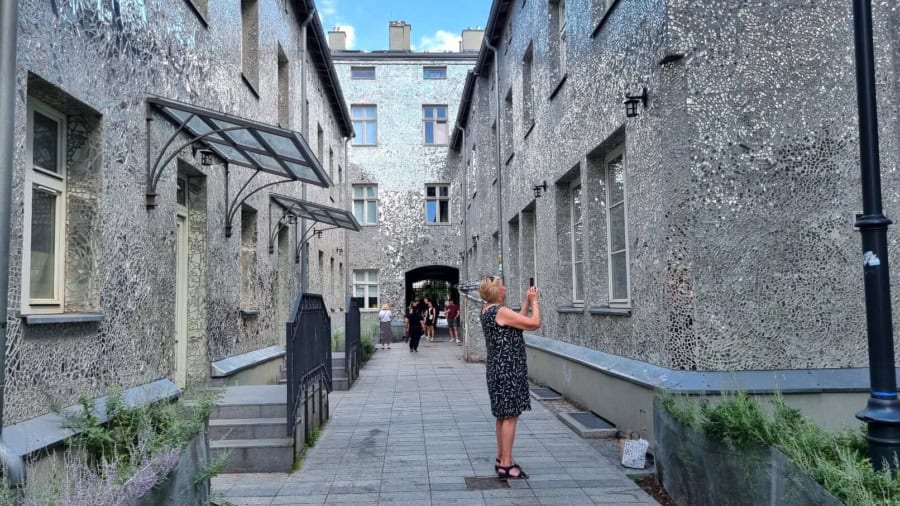Tucked in between the many historic tenement buildings on Piotrkowska Street in Łódž, there are many restaurants and clubs in distinctively decorated walkways and courtyards. However, the courtyard behind the tenement house at Piotrkowska is perhaps the most distinctive of all. Known as Pasaż Róży, or Rosa’s Passage, visitors here are in for quite a humbling visual spectacle when it comes to street art.
What is Pasaż Róży?
In a narrow sense, Rosa’s Passage refers to the rear facade of the tenement building and outbuildings in the passage at Piotrkowska 3 which are covered in pieces of broken mirror glass.
The building used to house Hotel Polski, the history of which dates back to the mid-nineteenth century. At that time, it was the most distinguished inn in Łódź. It became abandoned at the beginning of the 20th century. After the Second World War, it became a municipal tenement house and fell into further disrepair until it was entered into the city’s Miasto kamienic project. Implemented since 2011, this initiative aimed to restore tenement houses in Łódź to their former glory.
In a much broader sense, Pasaż Róży refers to a shortcut through the yards connecting Piotrkowska Street and Zachodnia Street. The entire area has been revitalised as part of the ongoing urban regeneration programme in Łódź.
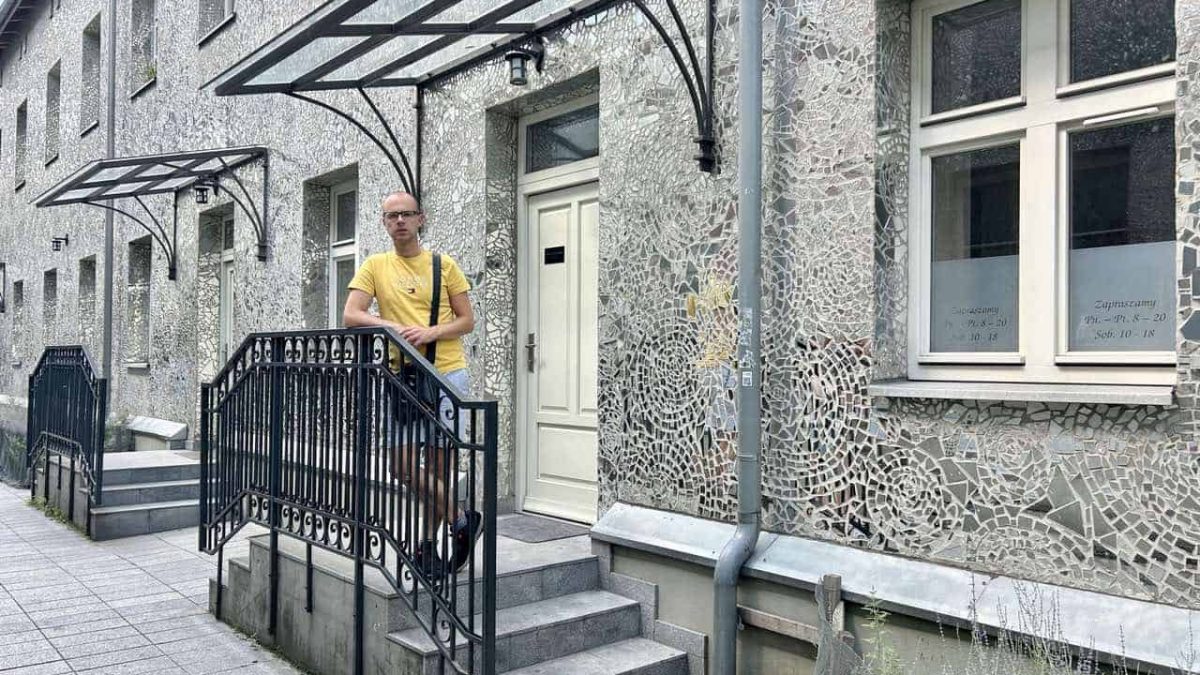
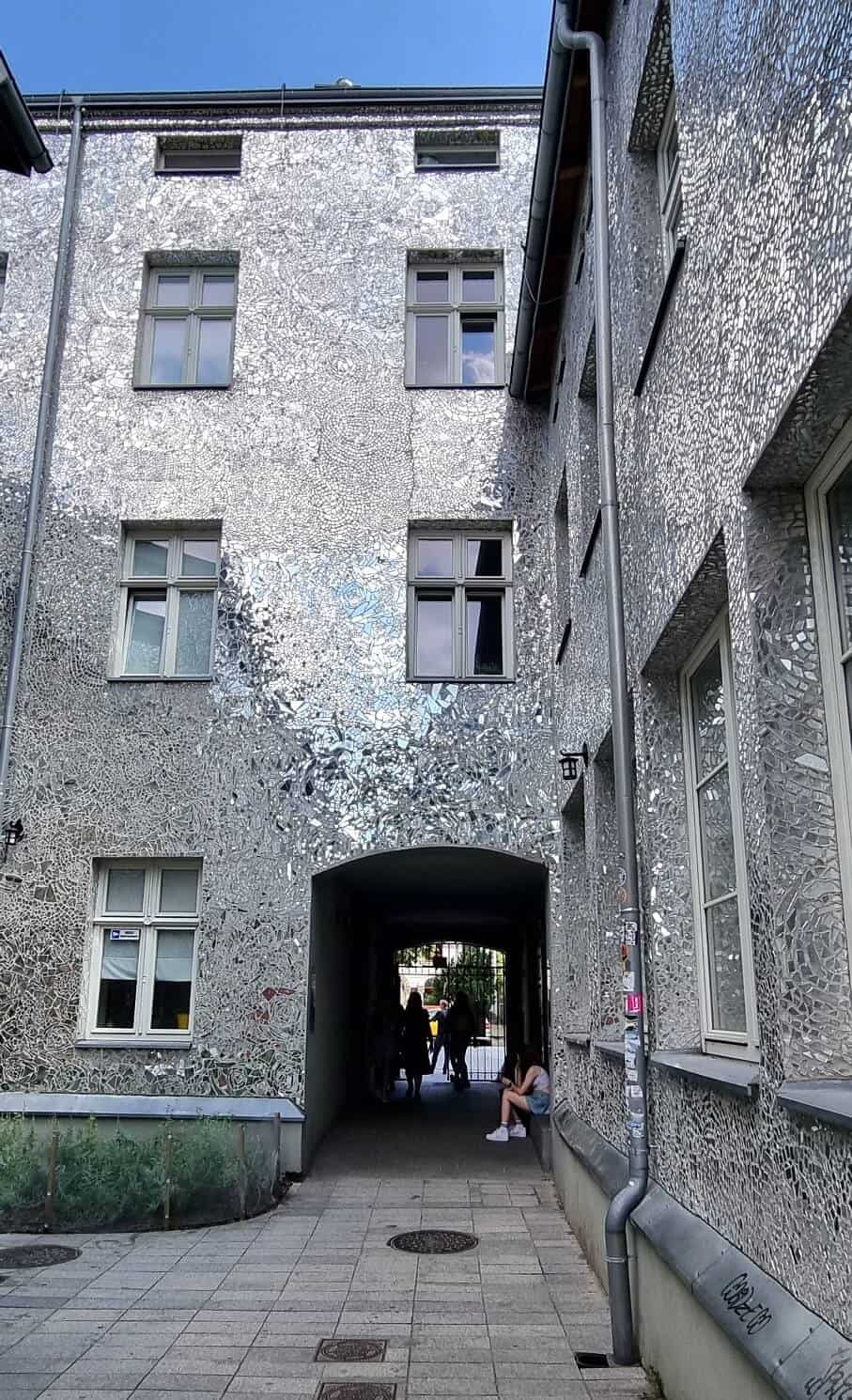
Who is the author of the project, Pasaż Róży?
The author of the project – Pasaż Róży – is Polish artist Joanna Rajkowska.
Born in 1968 in Bydgoszcz, Joanna studied Art History at the Jagiellonian University in Kraków between 1987 and 1992. Simultaneously, in the years 1988–1993, she studied painting at the Academy of Fine Arts in Kraków. That was in the studio of Professor Jerzy Nowosielski.
An exceptionally versatile artist, Joanna is the author of sculptures, photographs, drawings, objects and installations. She often creates works in public spaces. Indeed, her most famous work is “Greetings from Jerusalem Avenue” in Warsaw. This is a 15-metre-tall artificial palm tree located on the city’s Jerusalem Avenue.
What inspired Joanna Rajkowska to come up with the idea to arrange such a monumental mosaic of broken pieces of glass on the facades of a building?
The aforementioned project Miasto kamienic gave Joanna Rajkowska the chance to create one of the most spectacular artistic projects ever carried out in Łódź.
Rosa Dixon – Joanna’s Daughter
There’s a touching story behind the creation of Pasaż Róży. If you’re wondering why the passage is called ‘Róża’s Passage’, Róża was actually the name of Joanna’s daughter before it was anglicised to Rosa.
Born on May 21, 2011, Rosa suffered from retinoblastoma – a bilateral eye cancer – in the first year of her life. She had a fairly advanced tumour in each eye, located in the central part of the retina. With the tumours detaching the retina, Rosa began to lose her sight. Doctors described her vision by comparing it to a situation in which a clenched fist is stuck in front of each eye.
Thanks to the support of friends, acquaintances and strangers, enough money was raised to carry out an immediate operation in a London hospital. The operation was a success. Rosa regained her eyesight.
“When I visit Berlin, I feel nothing”
In an interview with Aurelia Nowak for the Szczecin-based magazine Magazyn Sztuki, Joanna Rajkowska spoke about the horrific tragedy she went through in Berlin. Essentially, medical negligence came to summarise Rosa’s case. The following words hit me hard. Over to Joanna:
I was not shaken by the fact that her illness was not diagnosed in Berlin. These are human mistakes, they happen everywhere. After all, this is a very rare disease. It is not in any of the parenting books. Parents don’t know about it, neither do ordinary paediatricians. The statistics show that only four in a million children have the disease. So, the chances of a child having retinoblastoma – cancer in the eyes – is tiny. The fact that the German paediatrician did not discover the tumours is nothing unusual … The hardest thing was the visit after the doctor already knew the diagnosis. When we entered his room, he was sitting, arms folded, behind his desk. We felt the need to say something. We started to pull out documents, showing them and explaining the situation. He decided to check her again. Rosa started to fight, kicking her legs, trying to get free, then she became hysterical and there was nothing we could do. He said that there was no evidence to prove that she had cancer. We were stunned. It was clear the only thing he was concerned about was his own protection from legal liability. He was afraid of being accused of medical negligence, which could have cost Rosa her eyesight, if not her life. The only thing he was interested in was the legal side of things – whether we would take him to court or not. We were faced with an irreversible mistake, the consequence of which was Rosa’s illness – a seriously advanced cancer.
… At the point when Rosa fell ill, Germany had become a trap. We were tired of how reluctant and resistant the health system was, the total bureaucracy, powerlessness. Blood tests could not be arranged. Even with a European medical insurance card. No one was able to tell us how much things would cost, when the results would be available. If you have a child which is undergoing chemotherapy you have to know the results immediately, delays could cost her life. For example if there are too few blood platelets, then a transfusion is essential, because in the case of injury, she could have bled to death. We made it to the end, but it was horrific. No one could help us. In this sense, Berlin had failed to become a “life-giving beginning”, but instead became a place in which it wasn’t easy to protect Rosa’s life.
What does Pasaż Róży depict for Joanna Rajkowska?
Organised as part of the Łódź of Four Cultures Festival, work on Rosa’s Passage began in 2013. The project was realised as part of the 2014 Dialogue of Four Cultures Festival in Łódź.
The location aspect
According to Joanna:
Pasaż Róży is a reference to the project’s location – a narrow courtyard at the back of the tenement building at Piotrkowska 3. The courtyard became a passage in the literal sense. So Rosa’s Passage is an idea of a special place and a route, thus redirecting human presence and attention.
In undertaking this project, Joanna was aware that life in Łódź had shifted away from Piotrkowska Street – the backbone of the city – to Manufaktura. Therefore, a shortcut connecting Zachodnia Street to Piotrkowska would go some way to reviving the beating heart of Łódź that is Piotrkowska.
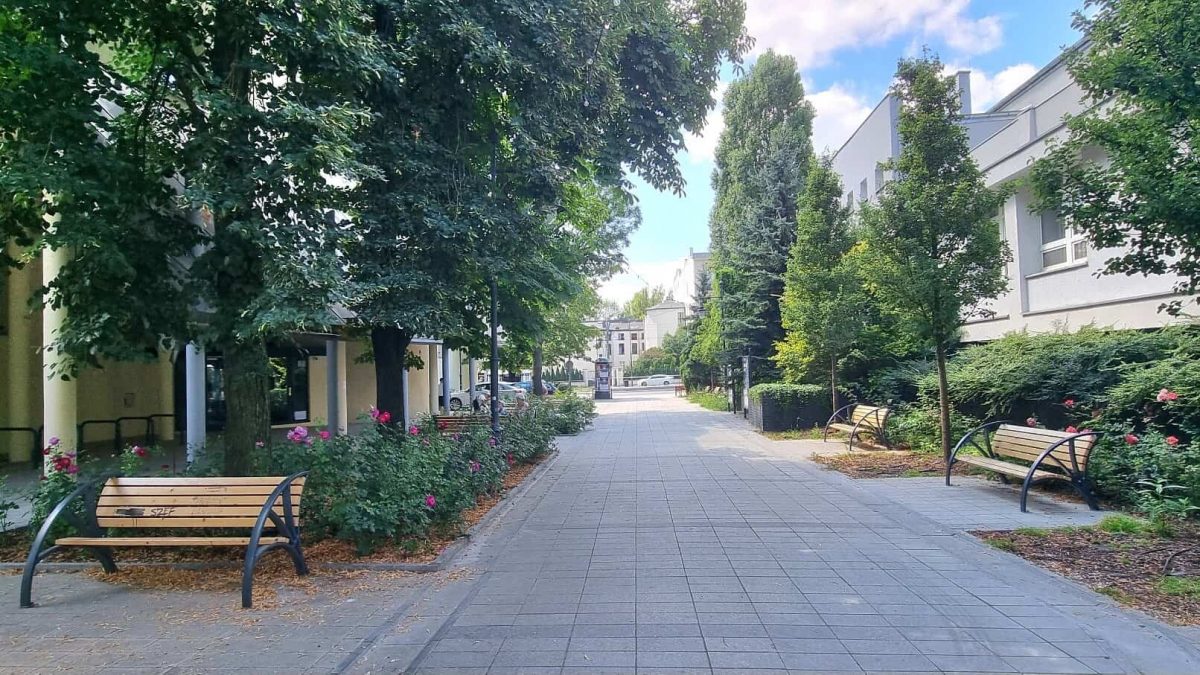
“From not seeing to seeing”
On the other hand, Rosa’s Passage depicts the journey Joanna’s daughter took “from seeing to not seeing”. Certainly, this journey was a painstaking one for both Rosa and her parents. One might assume that the process of glueing thousands of small pieces of irregularly cut mirror glass to the walls of a building – some 800 m2 – is a similarly arduous undertaking. There are squares, rectangles, rhombuses, triangles, diamonds and a plethora of other irregular shapes of broken glass of differing sizes covering the facade with a mosaic. The pieces of glass had to cover not only walls but also door frames, cornices, steps, niches, glyphs and jambs.
Joanna’s definition of Rosa’s Passage on a page dedicated to the project on her website is intriguingly technical. First of all, the mosaic is not simply “a decoration applied flat on the wall”. Rather, it is an “organically ingrown architectural skin. The obvious reference point is the retina that tightly lines the inside [fundus] of the eye.”
As Rajkowska points out:
The intention of the artist was to stop the viewer at the level of enchantment with the very possibility of seeing. The architectural skin that the buildings have grown is nothing but a retina, a light-sensitive tissue with which eyes are equipped. Moving a millimetre generates a completely different reflection in the mirror mosaic …
Summing up, the broken mirror fragments serve to create apparently distorted and disjointed images, symbolising Joanna’s daughter’s diseased retina. Moreover, the ensemble is a tissue organically embedded in the wall, consisting of the repetitive motive of a rosette, simulating nerve cell layout in the retina.
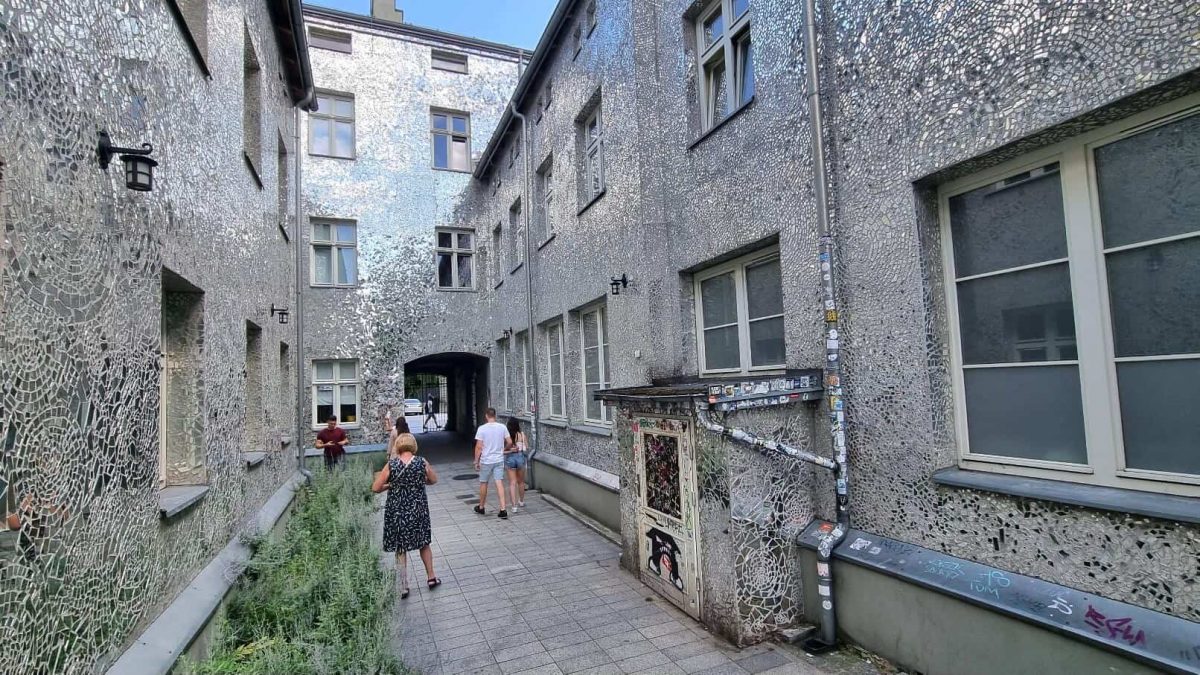
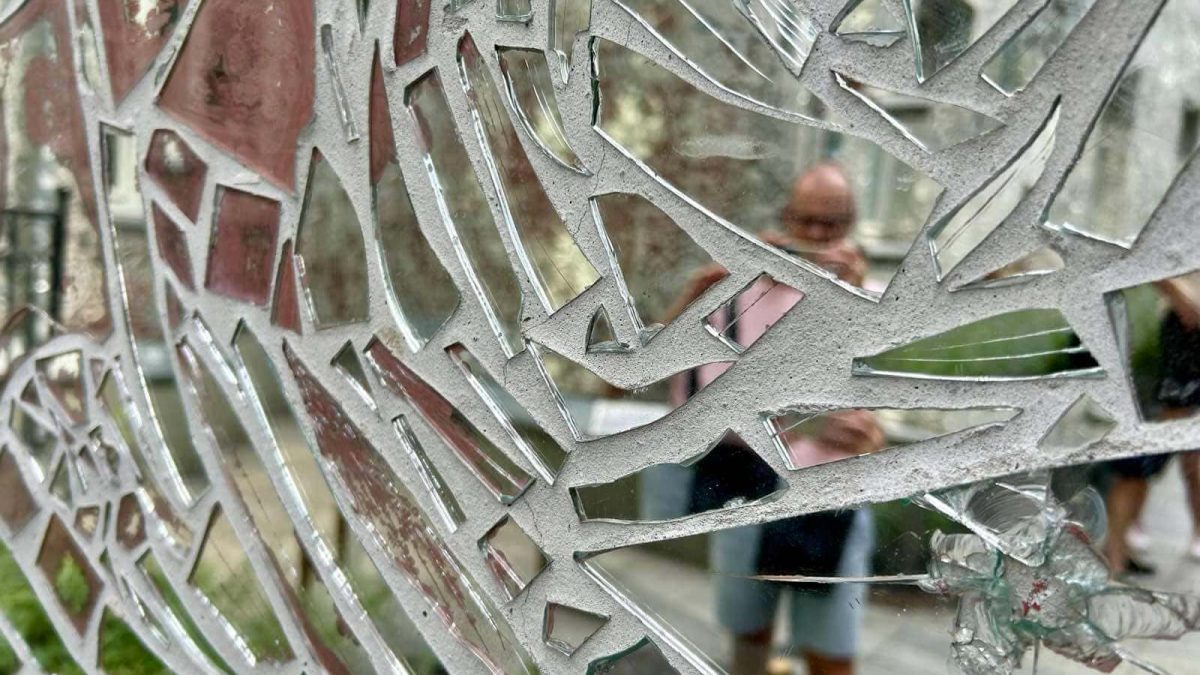
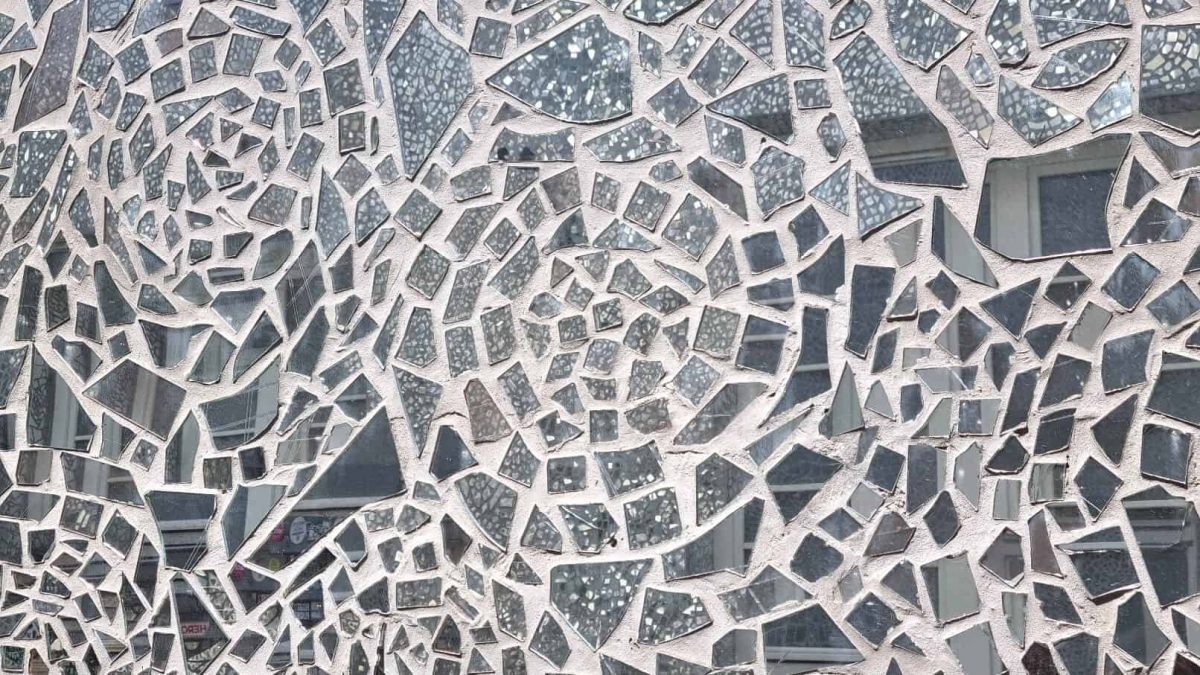
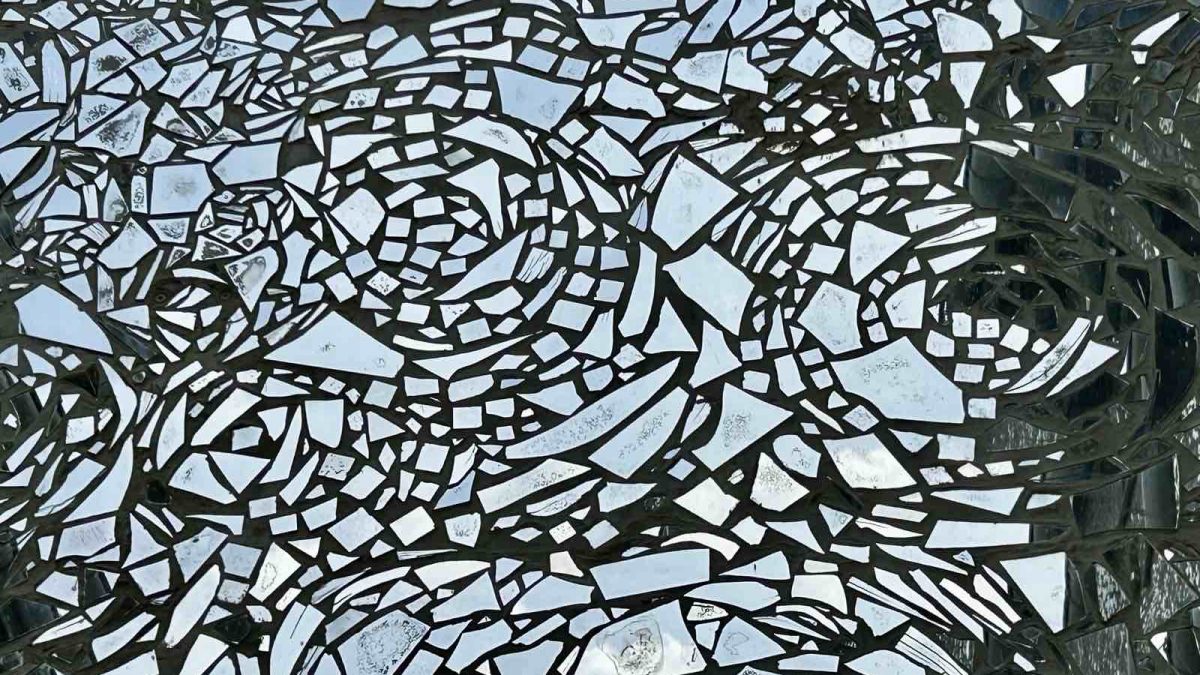
The Architectural Dimension of Pasaż Róży
In an architectural sense, such a monumental mosaic of cut pieces of mirror arranged on the facades of the outbuildings is, in Rajkowska’s view, an attempt to “visually dematerialise the body – an attempt to overcome the weight, scale and enormity of the building”.
Reflecting fragments of the surroundings, the sky, a huge amount of light has appeared in this quite dark yard, were to make this place something very light, flickering, surreal.
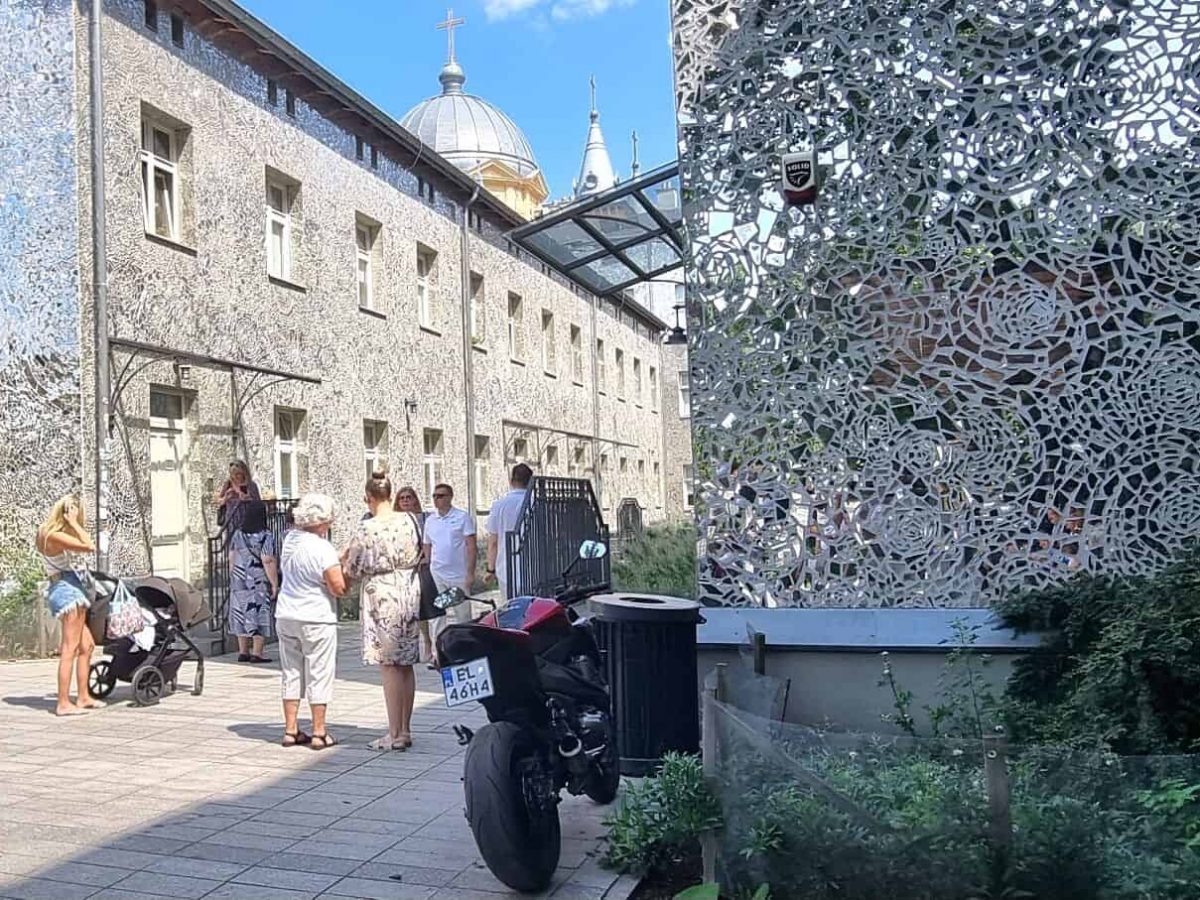
Another Masterful Piece of Revitalisation in the City of Łódź
As previously mentioned, Rosa’s Passage enables locals and tourists to take a shortcut via the backyards between Zachodnia Street and Piotrkowska Street. Emerging onto Piotrkowska, Freedom Square (Plac Wolności) is just a few steps away to your left.
As you can see from the images below, yet another attractive, quiet urban space was created in Łódź. It’s possible to relax and meet with friends on one of the many benches in the passage.
Rosa’s passage was partially paved with granite, while green belts with trees, bushes and other plants were added. The greenery is kept in good condition thanks to an automatic irrigation system. Additionally, the sidewalks have been designed in a way that allows water to flow towards the adjacent green areas.
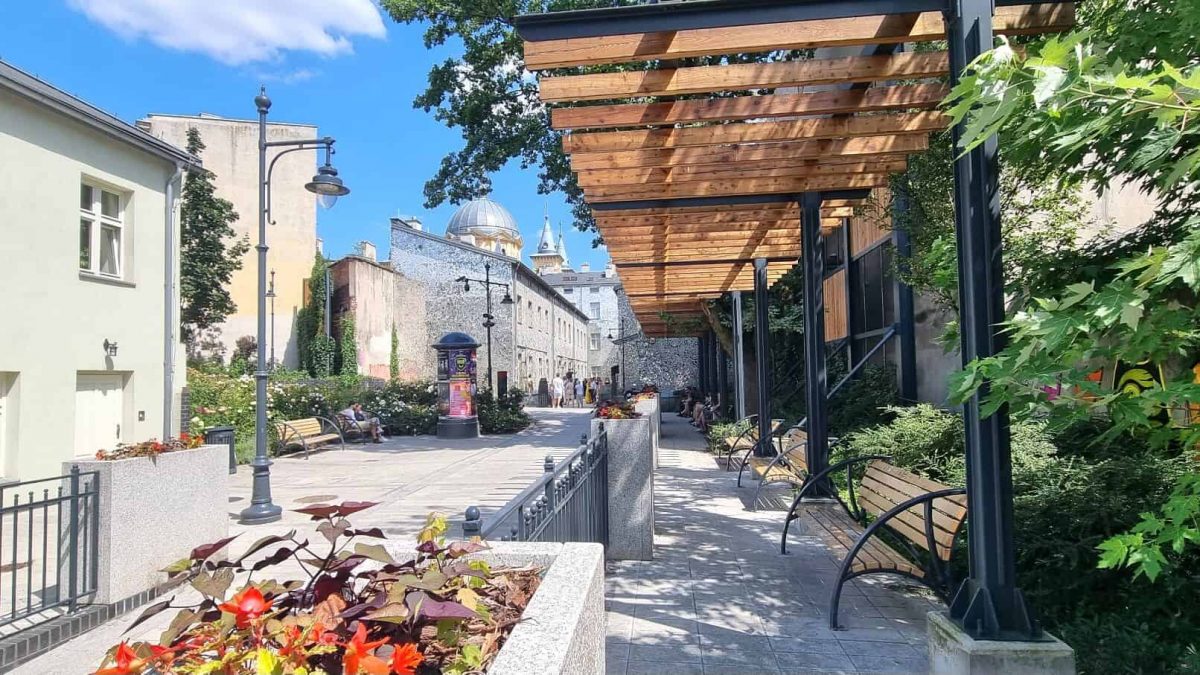
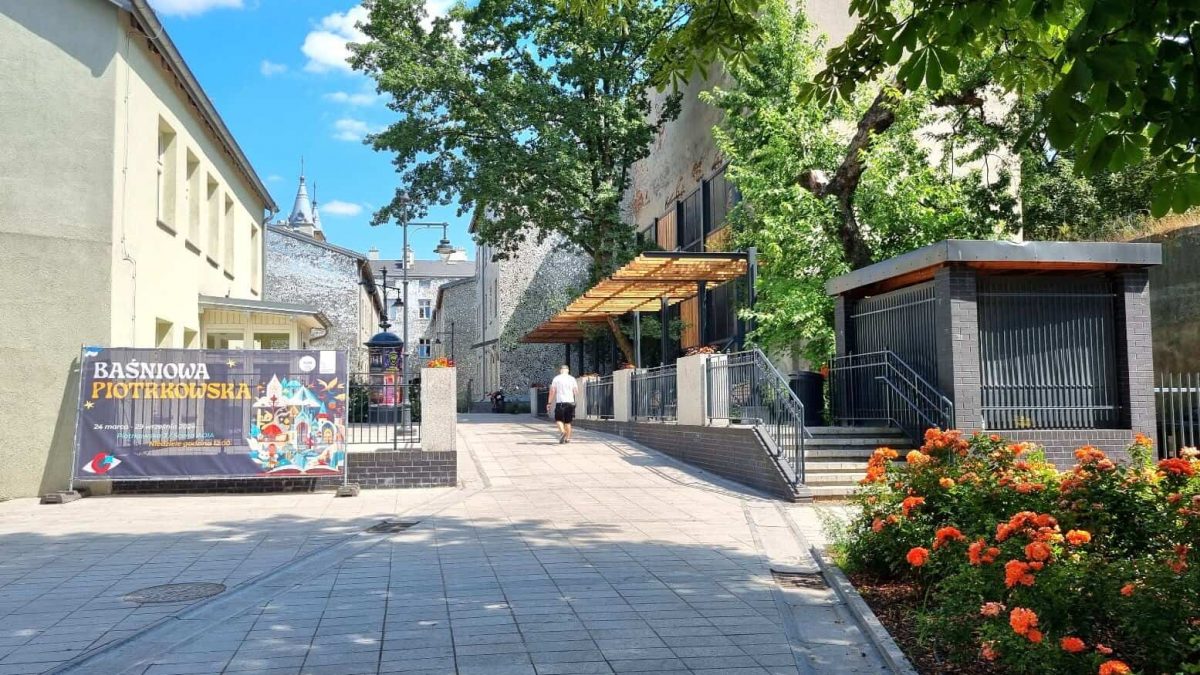
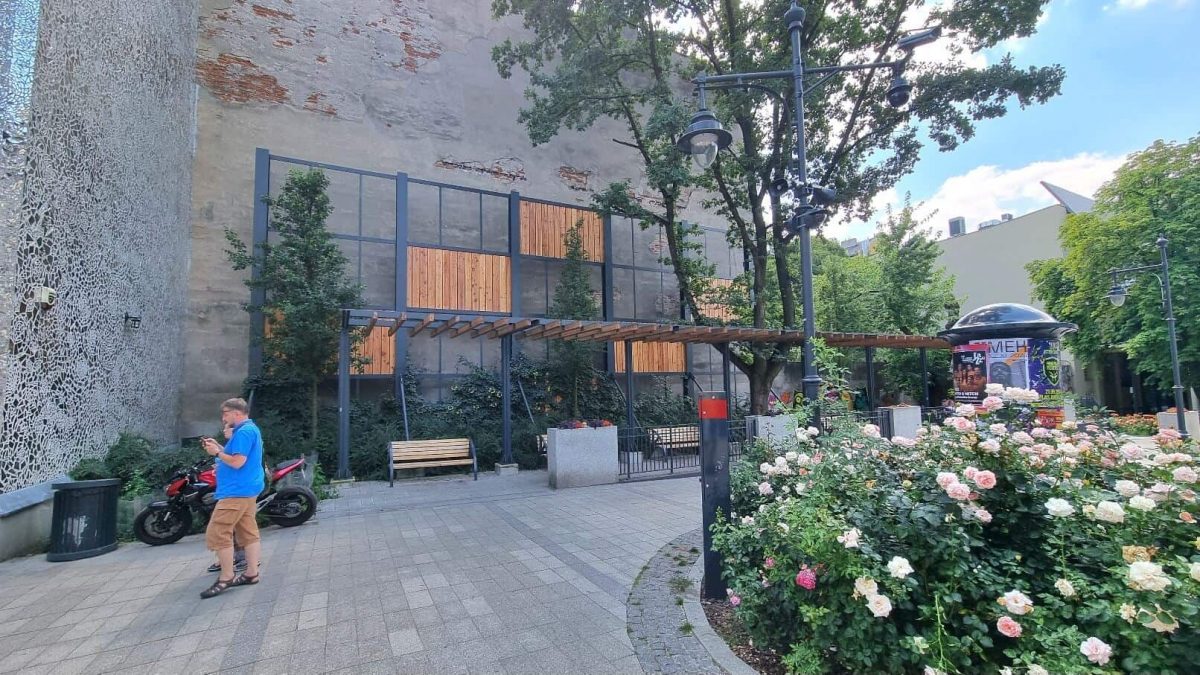
From a Sad, Grey, Dark Courtyard to an Incredible Play of Reflections
There is no doubt that Joanna Rajkowska has made a significant mark on the city of Łódź with Pasaż Róży. If you’re actually aware of what happened to Joanna’s daughter before rushing to the passage to snap away with your Smartphone, you certainly get a tingly feeling amidst all of the small pieces of mirror glass.
Łódź is changing for the better. Every piece of street art brings courtyards, buildings and facades in the city to life. Pasaż Róży forces passers-by to admire such an incredible play of reflections. It’s such a moving place to be.
FAQ
Yes, it is free to enter Rosa’s Passage and see the shattered glass mosaic.
Rosa’s Passage is open from 8 a.m. to 10 p.m.
While in Łódź:
A Walk Around the Centre of Łódź
Reference:
Magazyn Sztuki, issue 2012/03/September, pp. 36-55, Szczecin

